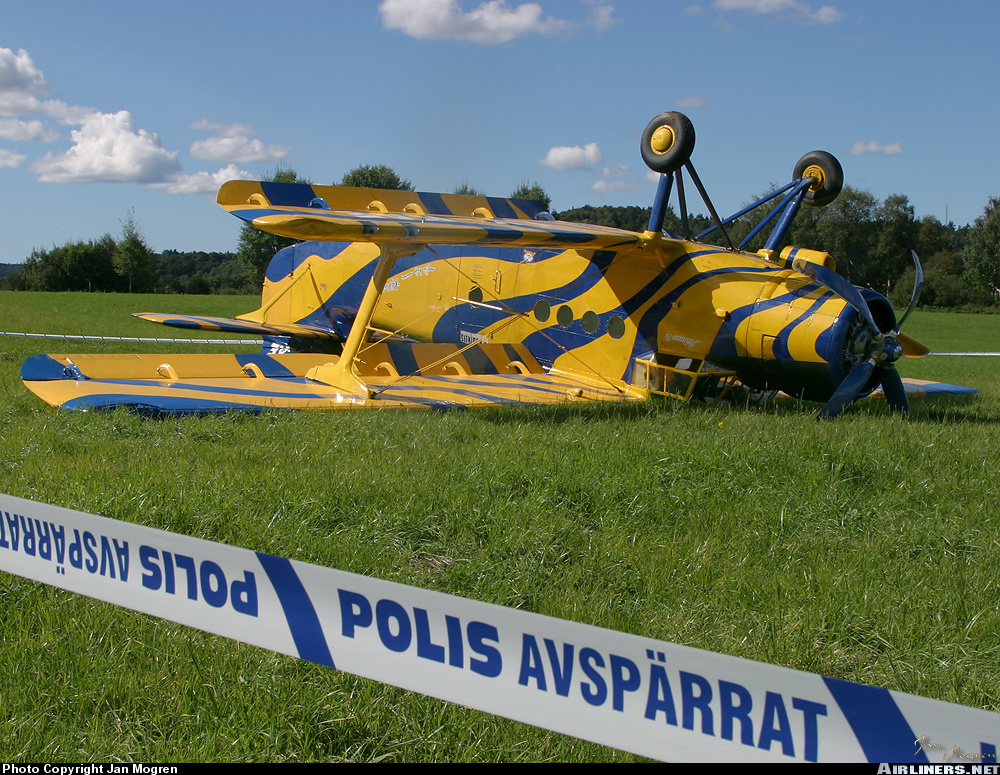Crash of a PZL-Mielec AN-2R in Trollhättan
Date & Time:
Aug 26, 2003 at 1730 LT
Registration:
LY-KAE
Survivors:
Yes
Schedule:
Trollhättan - Trollhättan
MSN:
1G196-54
YOM:
1982
Crew on board:
1
Crew fatalities:
Pax on board:
1
Pax fatalities:
Other fatalities:
Total fatalities:
0
Circumstances:
Upon landing at Trollhättan-Målöga Airport, the aircraft nosed over and came to rest upside down. Both occupants escaped uninjured while the aircraft was damaged. It was apparently repaired.
Probable cause:
The pilot used excessive brakes after touchdown, causing the brakes to block. The landing maneuver was completed with a tailwind component.
